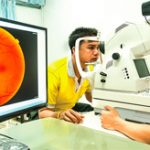Eric Matteson, MD, and I addressed these issues in a previous article, reviewing the available information regarding Wegener and suggesting that the time had come to stop using eponyms.3 Previously, Daniel Wallace, MD, and I, assisted by Rabbi Elliot Dorff, PhD, a leading ethicist, had persuaded international rheumatology editors to abandon “Reiter’s syndrome.” Reiter was president of the Reich Health Office and responsible for all experiments in concentration camps for reactive arthritis. When Ephraim Engleman, MD, who “named” Reiter’s syndrome in 1942, became aware of this, he agreed to retract his suggestion to use the term.4
I was disappointed that the board of directors of the ACR then declined to consider the issue of writer eponyms in 2007, when the Reiter retraction was published, but I am pleased that our organization and others are now confronting these challenging ethical issues. Kudos to them for their stand. They got this right.
“Big Girls Don’t Cry”
This was one of my favorite songs growing up. Another was “Sherry” because I had an unrequited crush on a girl named Shari. I got a kick out of seeing Frankie Valli and the Four Seasons, who recorded these hits, live last year while I was still in New Jersey.
(Silly boy) Told my girl we had to break up
(Silly boy) Thought that she would call my bluff
(Silly boy) But she said to my surprise
Big girls don’t cry
Crying—emotional tearing—is uniquely human.5 Investigators from the Weizman Institute in Rehovot, Israel, carried out an imaginative, intricate, and compelling series of experiments to show that human tears contain a chemosignal with profound effects. Men who sniffed odorless tears, obtained from women in circumstances with no emotional content, experienced reduced sexual appeal for the women, less sexual arousal, reduced physiologic measures of arousal, lowered testosterone, and concomitant changes in brain magnetic resonance images. Powerful stuff, these tears. “Not tonight, dear” would seem to be the simple message—an evolutionary signal. What else might be in tears? Where else might these or similar chemosignals be found? What are the active compound(s)? What are their mechanism of action? What else might they do? How might tears be involved in the changes we see in our patients with eye disease? Maybe there’s more to the eye than PERRLA. the rheumatologist
Dr. Panush is professor of medicine, Division of Rheumatology, Department of Medicine, Keck School of Medicine, University of Southern California, Los Angeles.
References
- Marmor MF, Kellner U, Lai TYY, et al. Revised recommendations on screening for choloroquine and hydroxychooroquine retinopathy. Ophthalmology. 2011;118:415-422.
- Falk RL, Gross WL, Guillevin L, et al. Granulomatosis with polyangiitis (Wegener’s): An alternative name for Wegener’s granulomatosis. Arthritis Rheum. 2011;63:863-864.
- Matteson E, Panush RS. Eponyms should be abandoned. Rheumatology News. December 2007;6:12.
- Panush RS, Wallace DJ, Dorff EN, Engleman EP. Retraction of the suggestion to use the term “Reiter’s syndrome” 64 years later: The legacy of Reiter, a war criminal, should not be eponymic honor but rather condemnation. Arthritis Rheum. 2007;56: 693-694.
- Gelstein S, Yeshurun Y, Rosenkrantz L, et al. Human tears contain a chemosignal. Science. 2011;331:226-230.

